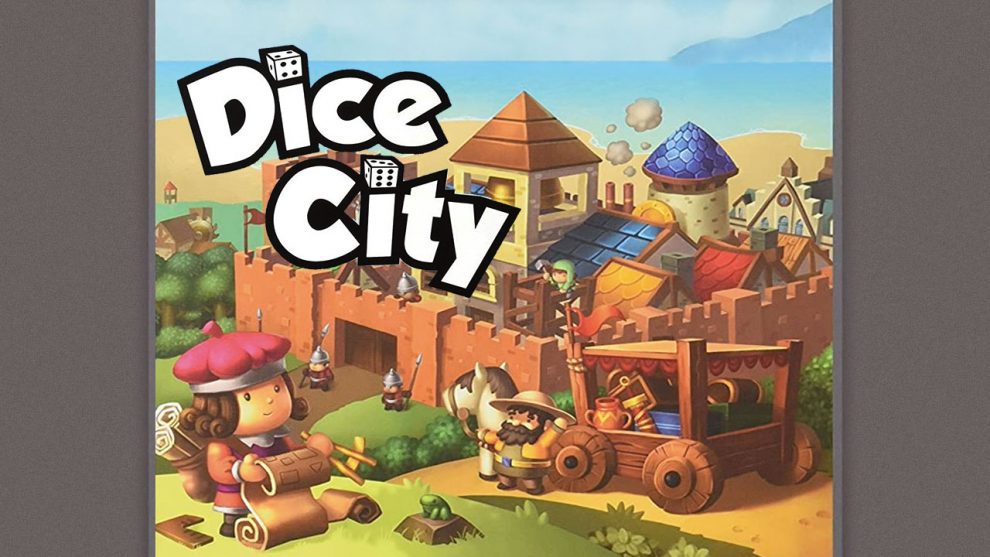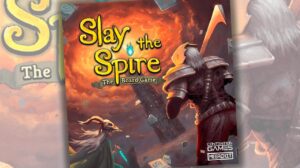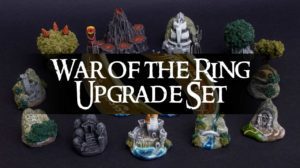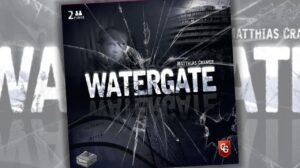Dice City, by designer Vangelis Bagiartakis (Among the Stars, Fields of Green) from Alderac Entertainment Group, is a game all about rolling dice, using them to develop your own personal city, and turning your city into an efficient points-producing machine. It has a great element of engine-building, as well as allowing you the freedom to choose how you go about building up the best city you can. Let’s take a look at the gameplay.
How To Play Dice City
Each player has their own player board, along with one of each color die. This is where the bulk of the action takes place.
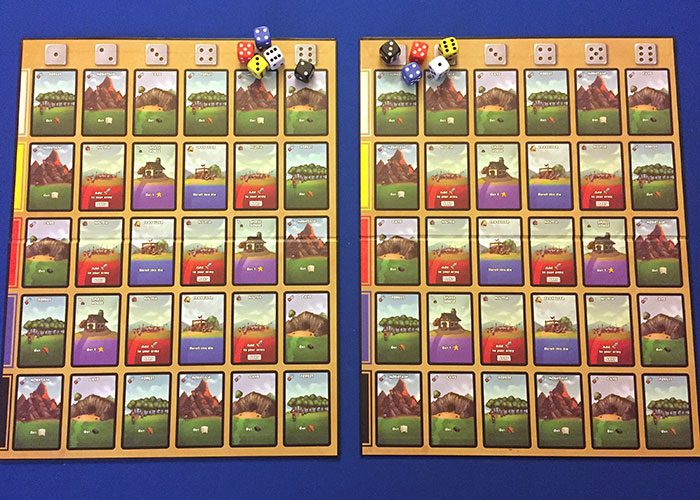
Each turn you will roll all of your dice, then assign them to their designated spaces based on the colored row and numbered column.
For example, rolling a white four and a yellow three would mean that you would put your dice on the Forest and the Small House
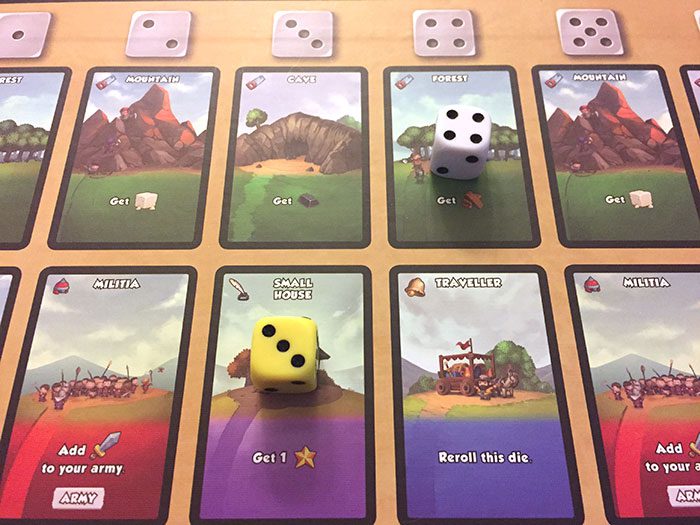
Once you have rolled your dice, you have some choices to make. (After the initial turn, players will actually roll their dice at the end of turn, which reduces downtime and allows more time for contemplating one’s strategy.) Each die can be activated once per turn to perform a number of different actions. The first and most obvious action is to use the ability of the space beneath the die. For example, activating that white die on the Forest space would allow you to gain one wood. There are three different resources that can be gained from these kinds of spaces: wood, iron, and stone. We’ll talk more about resources and their purpose a little later.
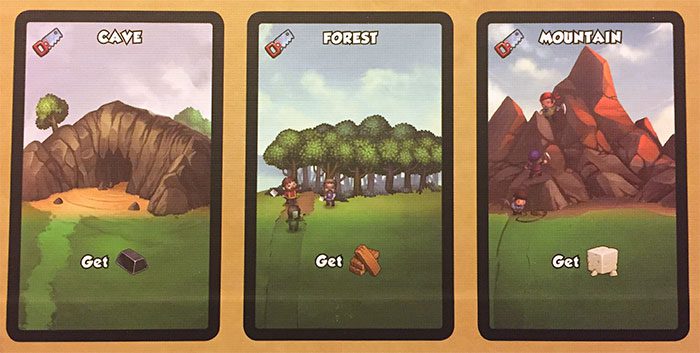
Another action you can take with a die is to use it to move another die in a different row one space within that row. For example, I could use the blue die to move the red die to the Small House space.
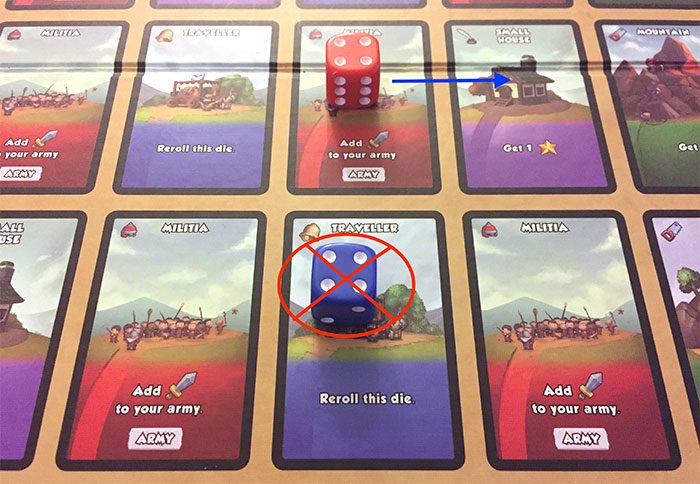
If all else fails, you may use one of your unused die to gain a “pass token,” which will end your turn. All is not lost, though. Trading in two pass tokens can get you one resource of your choice from the supply.

Now would be a good time to talk about the different spaces on the player board. As you can see, they are color-coded by what abilities they possess. Green spaces will gain you resources, purple spaces give you direct points, blue spaces are all about manipulating the dice, and red spaces are military. I’ll touch on military a bit later as well.

But wait, you might say, I thought this game was about city-building. Fear not, because I haven’t yet introduced the coolest part about the game: developing your own unique city. The game has a line-up of available buildings that you can develop if you pay the requisite cost in resources shown in the top right corner. Just like the starting spaces, these are color-coded to reflect their purpose. Buildings like the Mine or Lumber Mill will allow you to increase production of resources, while the Fountain and Well will let you manipulate the dice.
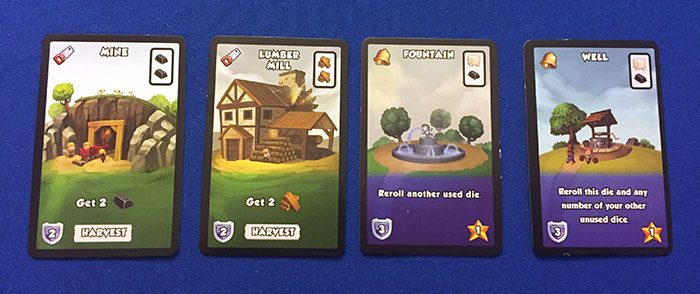
Certain buildings, like the resource-producing locations and regular army cards, will always be available, while the remaining eight buildings available are drawn from the city deck. Whenever a player purchases one of these buildings, it is refilled at the end of the turn. Players can only purchase one building per turn, no matter how many resources they may have in hand.
Whenever you purchase a building, you can place it anywhere in your city. It is now available to be triggered by your dice rolls. For example, if I place the Stables on the Mountain space, the next time the die lands on that space, it will have the power of the new building instead of the original space.

Let’s talk for a bit about resource production. Resources, in addition to being used to purchase buildings, can also be used to buy trade ships. There are three different levels of trade ship that increase in both point value and difficulty. For example, there is a ship worth twenty points, but requires four of each resource type, which is no small feat.
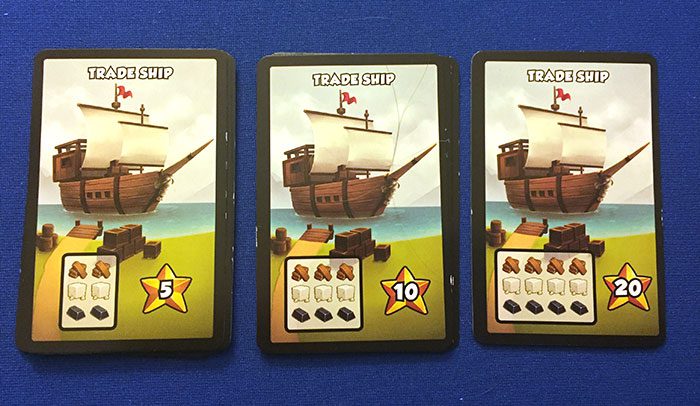
The twist when it comes to resources is that you are only able to keep one of each type from turn to turn. Thus, being able to snag those valuable trade ships means that you’ll have to build up your city’s production large enough to generate that many resources in a single turn.
Building a resource-rich economy to buy trade ships isn’t the only way to win, though. You’ll notice that most of the purple buildings either have automatic victory points, ways to gain automatic victory points, or bonuses that can increase your points total at the end of the game.
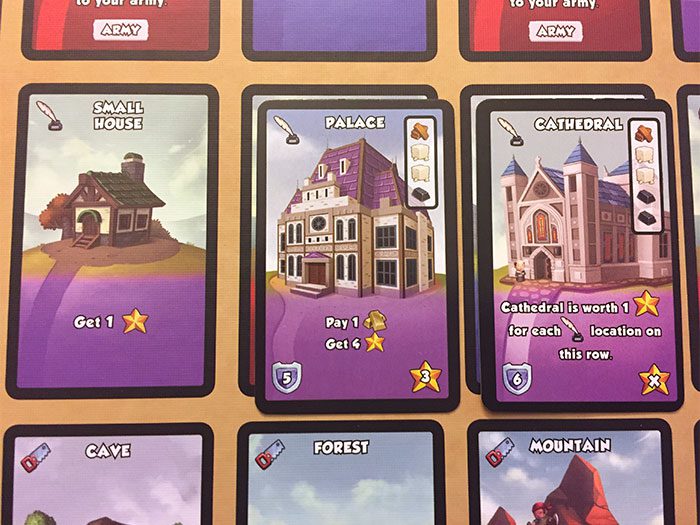
You can also gain points by using your military to kill bandits, either the level 1, 2, or 3 bandits worth 2, 3, and 4 points respectively. A player’s military strength starts each turn at zero, but can be boosted by using various buildings and spaces that increase military strength. Once you have enough military strength to match the defense of the bandits (indicated by the shield icon), you can take them out and snag those end-game points.
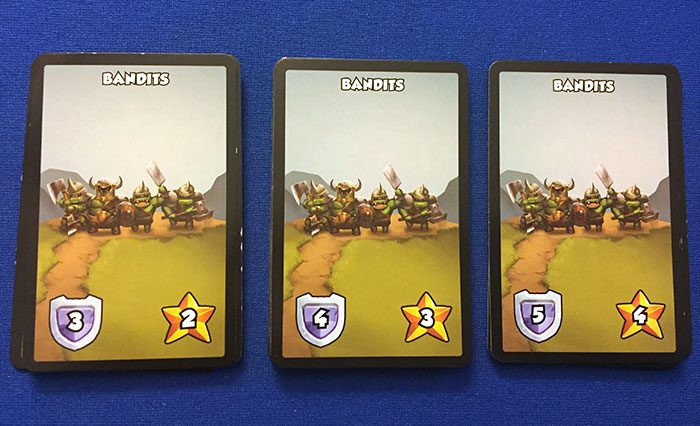
Military strength can also be used to attack another player’s buildings. Buildings have defense values just like the bandits do. Attacking another player’s building will deactivate it, preventing them from using it. However, a player can choose to use one of their unused dice to re-activate any building that has been deactivated.
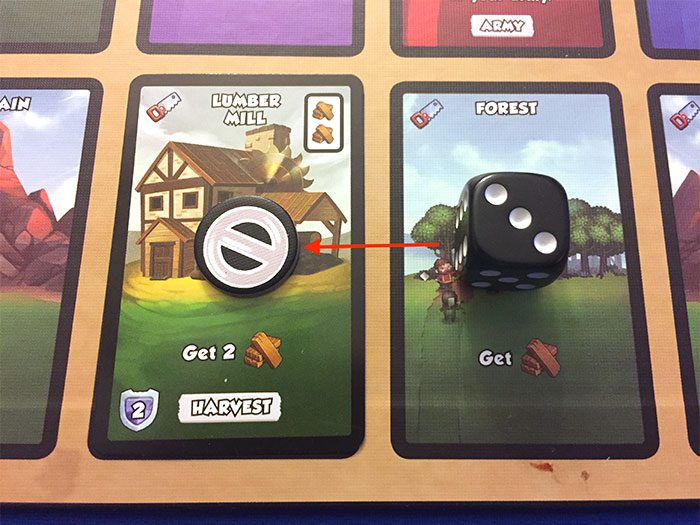
The game will end in one of three ways: when all of the bandits have been taken, when two out of three of the trade ship stacks have been emptied, or when one player has completely filled two rows on their city board. Players finish out the round, ensuring that all players have the same amount of turns, and the person with most victory points at the end is the winner.
What I Like About this Game
I love the innate variability of this game. There are dozens of different buildings to choose from, and multiple different paths to victory. Do I build up a powerful military and conquer bandits? Do I focus on building a production engine to go after those trade ships? Do I invest in those purple points-producing buildings? A mix of all three? I have played this game a number of times and can attest that all of these strategies are equally viable.
I also enjoy the difficult choices that the game presents. Manipulating one’s dice, deciding which spaces to activate, which dice to use to move other dice, which buildings to buy, all help create an enjoyable puzzle that is both challenging and rewarding. The fact that resources and military strength for the most part don’t carry over from turn to turn means that engine-building is a must. The combination of random dice rolls and tactical decisions combine to make a smart game that makes you feel clever when you’re able to pull off those awesome combos.
Another great thing about the game is that AEG continues to support the game by releasing expansions. To date, there have been two mini-expansions and one big box. The “All that Glitters” mini-expansion adds gold as a new resource that serves as both a “wild-card” resource as well as a new game end condition. It also provides new buildings that work in conjunction with the resource.
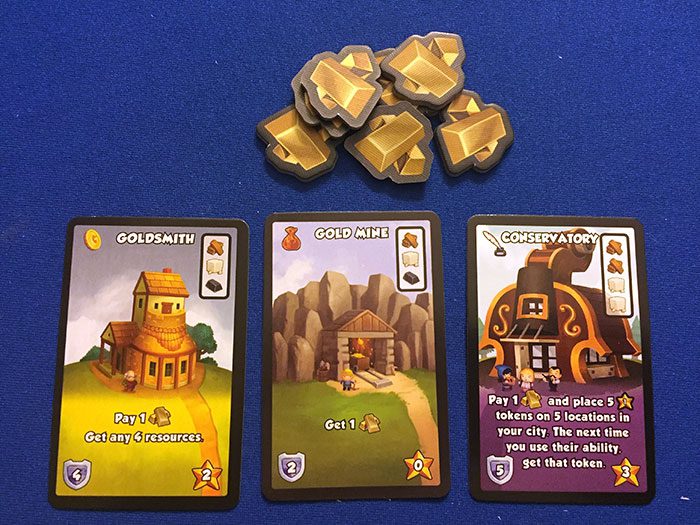

The “Crossroads” mini-expansion adds even more buildings, most of them that involve manipulating dice across the different vertical columns as well as the usual horizontal rows. The newest expansion, “By Royal Decree,” is a big-box expansion that comes with a new and separate trade board, with its own set of dice, providing additional bonuses and benefits for fulfilling the Queen’s personal interests. The game has enough built in variability with all the different buildings available, but I highly recommend checking out the expansions.
If I had to pick just one, I’d say the “Crossroads” is the best, because it incorporates both the gold resource of the “All That Glitters,” and new buildings that add plenty of variety without making the game too complex. I generally incorporate that into the game anytime I play, even when teaching the game to new players.
What I Don’t Like
My biggest issue with the game is that “Not all buildings are created equal.” What I mean by this is that there are some buildings that are clearly better than others. Since the line-up is ever changing, you may not have a chance to get the best buildings simply because they didn’t get drawn on your turn. For example, if you choose to go with a military strategy, but no military-themed buildings show up in the lineup on your turn, you probably won’t be able to make your military strong enough to be competitive.
Often times, you end up with multiples of the same building that no one seems to want to buy. You can use one of your unused dice to clear one of the rows and get four new city cards, but since dice actions are limited, players are usually hesitant to “burn” one of their dice to do this. One way that I have found to mitigate this is to employ the “Advanced Machi Koro” variant in which you keep drawing city cards until you have 8 “unique” buildings, rather than just drawing eight cards.

This can provide more options, as well as potentially making more of those really good buildings available on a given player’s turn. In my opinion, this should have been built into the game, but it’s easy enough to implement. When adding expansion content, this variant is almost a must if you want to see a lot of variety.
Additionally, one thing that I think is missing from this game is player interaction. While you can technically use your military to de-activate someone else’s building, it is ultimately an inefficient use of your resources that only causes a temporary distraction to the other player, since they can just re-activate it the next turn. More often than not, the game can sometimes play more like a multiplayer solitaire. Some gamers are totally okay with this, but I prefer to have a little more player interaction in my games.
Final Thoughts
Dice City is a delightful game that is relatively easy to learn, but provides plenty of difficult choices and interesting strategic options. I’d probably label this as a “gateway plus.” The concept of engine-building and the glut of available options may slow down a new gamer, but it shouldn’t provide that much of a challenge to anyone familiar with dice manipulation, engine-building, or resource management.
Dice City has quickly become one of my favorite light city-building games. The multiple viable paths to victory, built-in variability, along with the easily accessible expansions, allows each play to feel different and new. The turns are relatively quick, so it scales incredibly well with 2-4 players. (Side note: the game does have a solo mode, but I haven’t tried it since I don’t generally play solo games. If that’s your thing, though, by all means check it out.) Since you’re doing your dice rolling at the end of the turn, you have plenty of time to start planning for your next turn. Overall, this game is lots of fun and I highly recommend it if you’re looking for a light city-building game that still packs a good punch strategically.
What do you think about Dice City? How does it stand up to your favorites? Tell us about it in the comments below.


